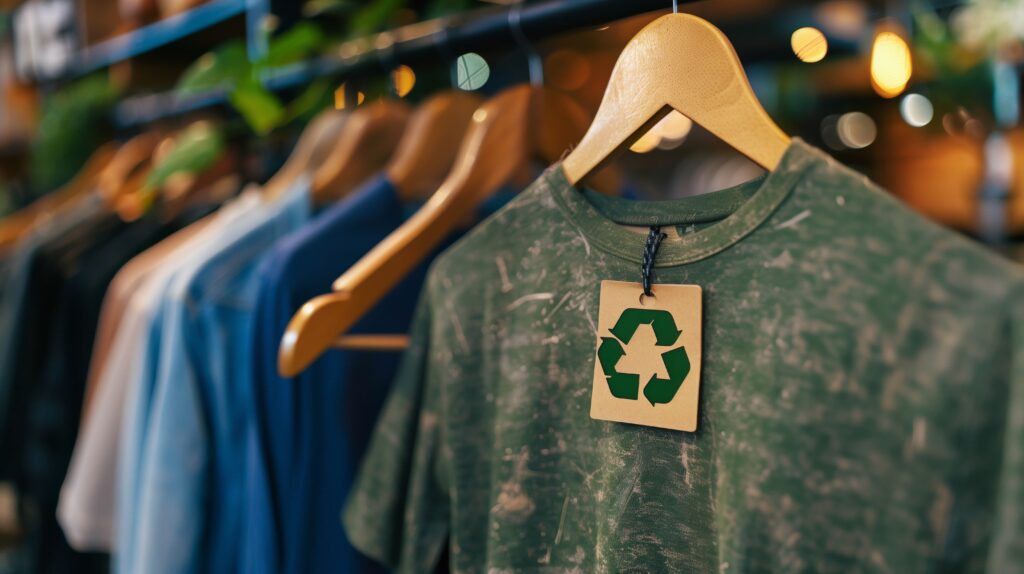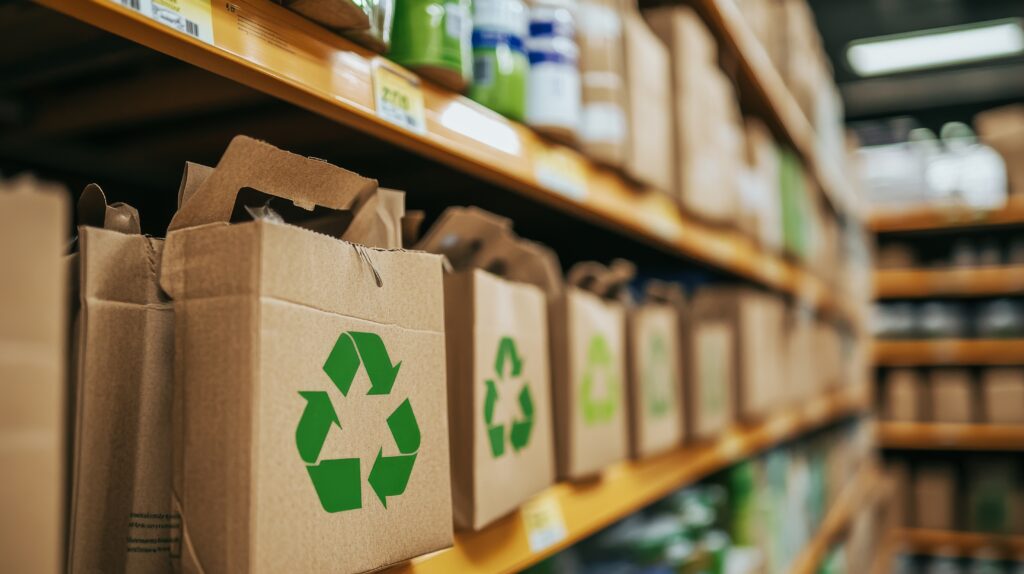As ecommerce continues to thrive, customers increasingly expect seamless, often free, returns. While retailers prioritize convenient, complimentary returns to attract customers, the normalization of simple returns has significant environmental consequences, and the impact of ecommerce returns on the planet is a growing concern that needs to be addressed by both retailers and consumers. In this blog, we’ll explore the role of consumer behavior in return rates, the strategies retailers are using to mitigate their environmental impact, and the future of sustainable returns in retail.
How ecommerce retail returns contribute to environmental waste
Convenient returns may help retailers drive sales, but the rise of ecommerce has fueled a surge in retail returns, with total returns in 2024 reaching $685 billion—representing 13.2% of all sales. A large portion of the environmental impact comes from the overall returns process, which includes transport and logistics, excess packaging, and products ending up in landfills. A 2022 Optoro study revealed that 9.5 billion pounds of returned goods in the United States ended up in landfills, generating 24 million metric tons of CO₂ emissions.
The growing popularity of returns fraud and abuse balloons the already problematic issue of landfill waste. Retailers and consumers operate in an omnichannel world, making it easier for fraudsters to exploit the system. In 2024 alone, return and claims abuse cost retailers $103 billion.
The reverse logistics process—shipping, inspecting, and repackaging returns—generates substantial carbon emissions, contributing to an environmental decline.
Two of the most prevalent return practices in ecommerce that harm the environment and contribute to waste are:
- Excessive bracketing – Excessive bracketing refers to the practice of buying multiple versions or sizes of the same product with the intention of returning most items. For example, a customer buys several outfits in multiple sizes and colors, tries them all on at home, and then returns a majority of the items. While this practice helps customers find the perfect fit, it also increases the volume of returns, resulting in excessive transportation emissions and waste.
- Wardrobing – Wardrobing fraud, also known as “using and returning,” occurs when customers buy items with the intent to use them briefly and then return them for a full refund. This return abuse is common in industries like clothing, home improvement, furniture, and electronics, where items are briefly used for events or projects and returned without signs of use. The result? A high volume of returned goods, often in used condition and unsellable, can be costly for retailers’ profitability and detrimental to the environment.
Tackling sustainable returns requires a collaborative effort from both retailers and consumers. Consumers can make more mindful shopping decisions, while retailers must implement sustainable return policies and innovative solutions to minimize waste.
Encouraging environmentally responsible customer behavior in retail
The growing need for retailers to adopt strategies for eco-friendly shopping is becoming increasingly important, especially as younger generations are more concerned with overconsumption and its environmental impact. By offering sustainable alternatives, promoting conscious shopping habits, and utilizing tools like virtual try-ons and AI-powered fit recommendations, retailers can not only reduce return rates but also build stronger customer loyalty and contribute to a more sustainable future.

Retailers’ strategies to mitigate the environmental impact of returns
Retailers are becoming increasingly aware of the environmental impact of returns. However, balancing the need for sustainable practices with maintaining customer satisfaction presents unique challenges.
Below are three key strategies retailers are implementing to mitigate the environmental effects of returns and the hurdles they face along the way.
1. Sustainable packaging solutions
Retailers can minimize waste by adopting sustainable packaging for both outbound and return shipments. Lightweight, recyclable, or reusable materials can significantly reduce packaging waste and emissions. Many major retailers have adopted sustainable packaging like using compostable mailers or reusable packaging.
2. Implementing smarter return strategies
To curb excessive returns, retailers are introducing smarter, more strategic return policies, such as:
- Charging return fees for frequent returners.
- Extending return windows to encourage thoughtful purchasing rather than impulsive buying.
- Incentivizing exchanges over refunds to keep merchandise in circulation rather than discarded.
3. Leveraging technology for efficient reverse logistics
Advanced technology is playing a crucial role in making the returns process more sustainable. Solutions like Appriss® Engage allow retailers to select return options that align with sustainability goals while also providing incentives for in-store returns or exchanges. Additionally, AI-driven analytics can help retailers predict and reduce return rates by identifying patterns in return behaviors.
The future of sustainable returns in retail
Retailers must remain up to date with the latest retail loss prevention technology trends to reduce returns and lessen their environmental impact. To achieve this, many are exploring AI-powered recommendations, customer education, and return incentives to proactively minimize returns. Some retailers are also shifting towards rental and resale models to reduce waste and promote sustainable consumption.
Balancing sustainable retail returns and customer satisfaction
To reduce returns, 83% of retailers have tightened their policies, and 84% have done so to combat fraud. While these measures help curb abuse, they can also inadvertently damage customer loyalty, and even worsen the environmental impact of returns, contributing to waste and increased carbon emissions.
So, how important is a positive returns experience to consumers, and how can it align with sustainability goals? A recent report from Appriss Retail and Retail Dive explores fraud prevention strategies, consumer frustrations, the gap between retailer policies and shopper expectations, and how AI can improve return management while reducing the negative environmental impact.

How can a shift towards more responsible return practices benefit both the environment and the economy?
Adopting sustainable return practices can yield significant benefits:
- Cost savings: Reducing return volumes lowers logistical and processing expenses for retailers. These savings can be reinvested in sustainability efforts or passed down to consumers through lower prices and discounts.
- Improved brand reputation: Customers are increasingly prioritizing sustainability, making eco-conscious brands more attractive.
- Environmental preservation: Sustainable return strategies contribute to reducing waste and emissions, fostering a healthier planet.
By embracing innovation and responsible shopping habits, both consumers and retailers can work toward a more sustainable future for ecommerce. Reducing returns through smarter strategies, improved logistics, and AI-driven solutions helps retailers minimize their environmental impact while protecting their bottom line. However, balancing sustainability with customer satisfaction requires the right strategy.
Appriss Engage is built to help retailers streamline omnichannel returns, prevent fraud, and boost customer loyalty. Retailers using Engage have seen an average reduction in returns overall by 8-12%. This not only helps recoup lost profits, but also reduces the negative environmental impact associated with processing fewer returns.
By analyzing data across all channels, Engage ensures seamless transactions and an exceptional customer experience without compromising service. Engage does the hard work for you—so you can focus on serving your customers, growing your business, and being kinder to the planet. Ready to get started? Schedule your discovery call today to connect with a solutions expert.






